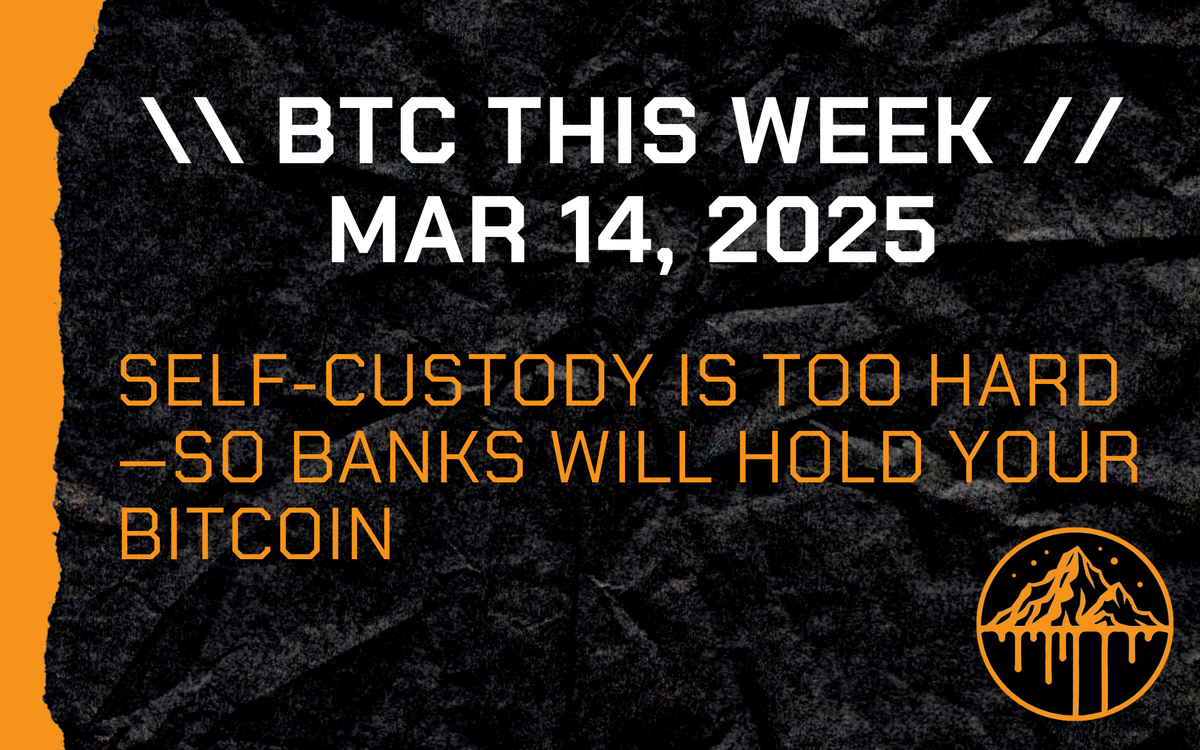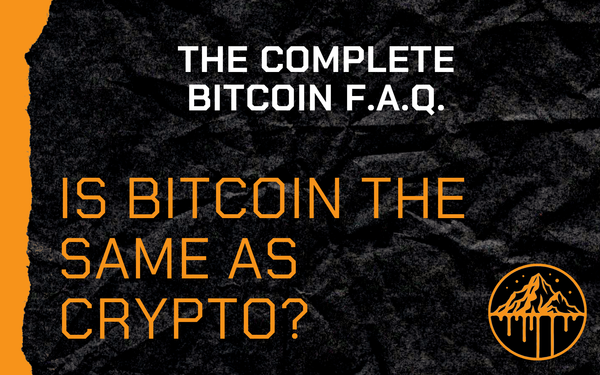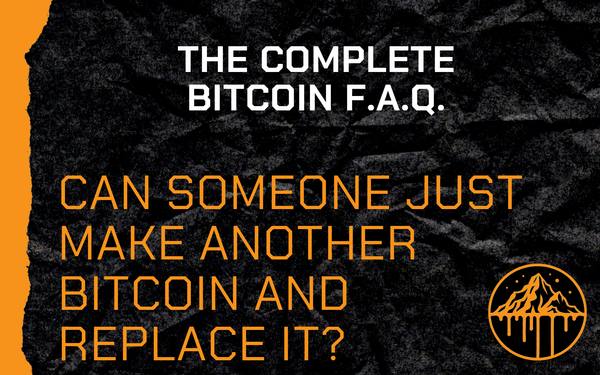Self-Custody Is Too Hard—So Banks Will Hold Your Bitcoin
I had a realization that I’ve been trying to ignore: 99% of people will never self-custody Bitcoin the way it exists in 2025.

The Hard Truth About Self-Custody and Bitcoin Banks
For years, I’ve been a firm believer in self-custody. Not your keys, not your coins isn’t just a mantra—it’s the fundamental difference between Bitcoin and every other financial system. But this past week, I had an experience that shook my confidence in how realistic self-custody is for the average person.
I spent several days trying to walk my daughter through how to access our Bitcoin. I showed her the wallet, the backups, the multisig setup, the passphrase security—everything.
She’s a smart kid enrolled in a very prestigious school inside a very prestigious university. National Honor Society. 4.0 GPA. Blah, blah, blah. And halfway through the process of sending a few sats from one wallet to another, she was almost in tears.
I had a realization that I’ve been trying to ignore:
99% of people will never self-custody Bitcoin the way it exists in 2025.
The Shirky Principle and Why Banks Are Stepping In
The Shirky Principle states that institutions will fight against innovation until they find a way to control it. Banks hated Bitcoin when they thought it was going to replace them. Now that they realize they can’t kill it, they’re pivoting toward custodying it instead.
Interpretive Letter 1183 (IL 1183) is a clear sign of that shift. By reversing the regulatory barriers imposed by IL 1179, the U.S. government is essentially saying:
- “Okay, banks—you’re allowed to hold crypto now.”
- “We’re not banning Bitcoin, we’re absorbing it.”
This used to infuriate me. And to be honest, part of me is still mad about it. Banks are positioning themselves as the “safe” option for Bitcoin custody, but in doing so, they weaken the entire point of Bitcoin’s existence. Bitcoin wasn’t created so we could outsource our financial sovereignty to Chase or Wells Fargo.
And yet…
The Hard Truth About Self-Custody
After days of explaining seed phrases, inheritance planning, cold storage, multisig, and all the security layers I’ve put in place, I saw something in my daughter’s eyes (besides tears) that I think most Bitcoiners ignore:
Confusion. Frustration. Hesitation.
She gets why Bitcoin is important. She believes in its value. But the actual process of holding it safely, without screwing it up, without losing access, without introducing unnecessary risks? It was overwhelming for her.
And if it was overwhelming for her, someone who has me to guide her, what does that say about the average person who isn’t obsessed with Bitcoin?
- Most people don’t want to be their own bank.
- Most people don’t want to memorize passphrases.
- Most people don’t want the stress of losing everything if they mess up their backups.
As much as I hate to admit it, custodial solutions are inevitable.
Bitcoin Needs an “Apple Moment”
Right now, self-custody feels like Linux—powerful, sovereign, but only for people willing to tinker with it. I love Linux Mint Cinnamon, if you were curious. However, we need Bitcoin’s “Apple moment”—when holding your own keys becomes as easy as using an iPhone.
Until that happens, people will choose convenience over sovereignty.
Banks know this. That’s why they’re positioning themselves as the trusted Bitcoin custodians. They see the friction of self-custody and are offering a solution: “Let us hold it for you, just like we hold your dollars.”
That doesn’t make them the right choice—but it does make them the inevitable choice for most people.
Why I’m Torn
I still believe that self-custody is the only way to fully own Bitcoin. I still believe that trusted third parties are security holes. But after this past week, I also have to acknowledge that self-custody, as it exists today, is too hard for most people.
So what’s the answer?
Right now, I don’t know. Maybe Bitcoin banks will emerge that follow Bitcoin’s principles—I’m looking at you Saylor and Strategy. Maybe better inheritance planning tools will be built. Maybe multisig will become as easy as logging into an app.
But until then, we have to accept the reality: If we don’t make self-custody easy, banks will do it for us.
Final Thought: Is This a Failure or Just the Next Phase?
Bitcoin isn’t finished evolving. Neither is the way we secure it. IL 1183 doesn’t mean banks have won—it just means they’ve accepted Bitcoin is here to stay.
Maybe this is just a transition phase—a necessary step before self-custody becomes mainstream. Or maybe Bitcoin’s role is shifting, and the reality is that not everyone is meant to hold their own keys.
I don’t have the answer. But after this past week, I know one thing:
We need to make self-custody easier, or people will take the path of least resistance.
And that path leads straight to the banks.
Wealth melts. How much you got left?
Disclaimer: Melting Wealth is not financial advice. It’s a wake-up call. Think for yourself, question the system, and take responsibility for your decisions. Your money, your risk, your move.





